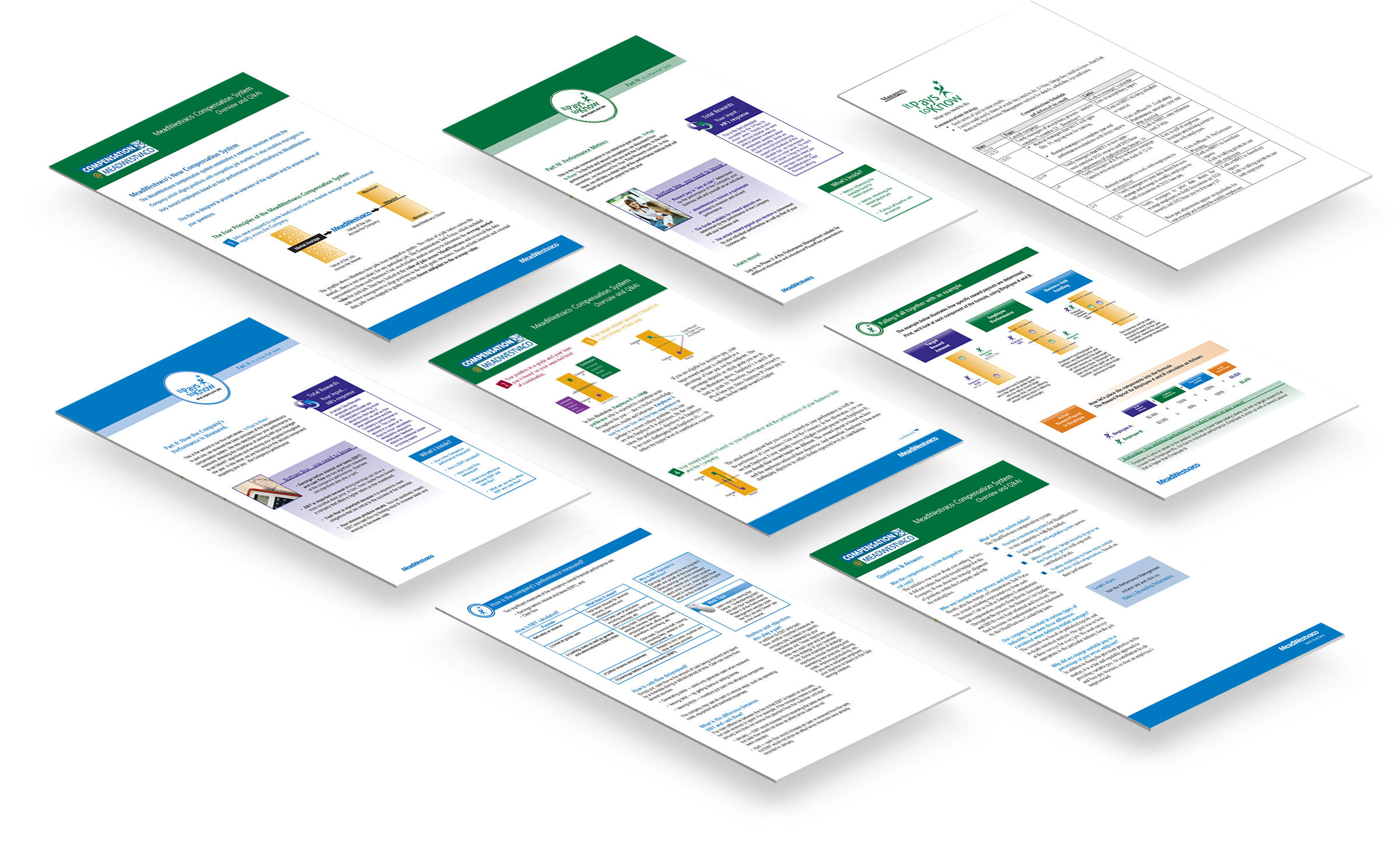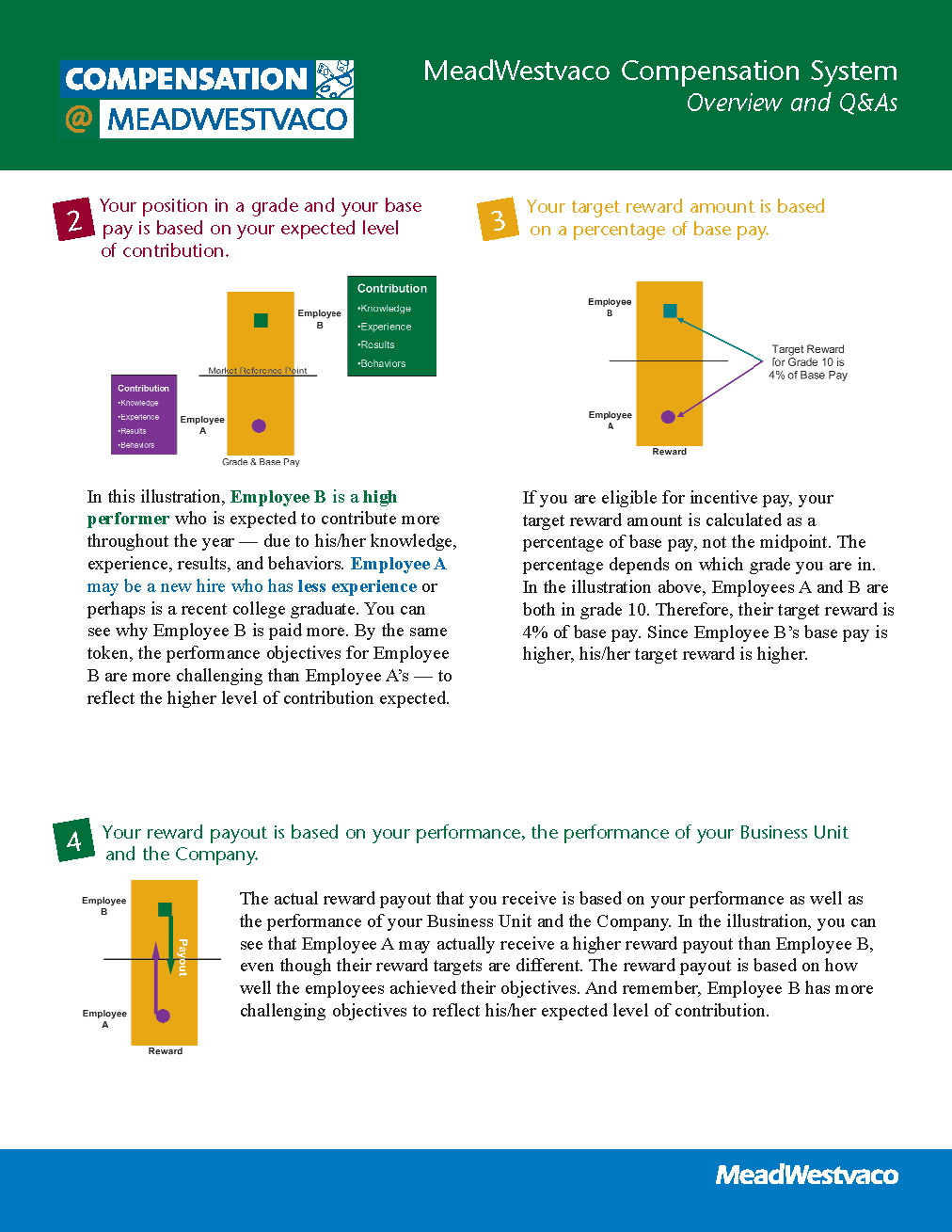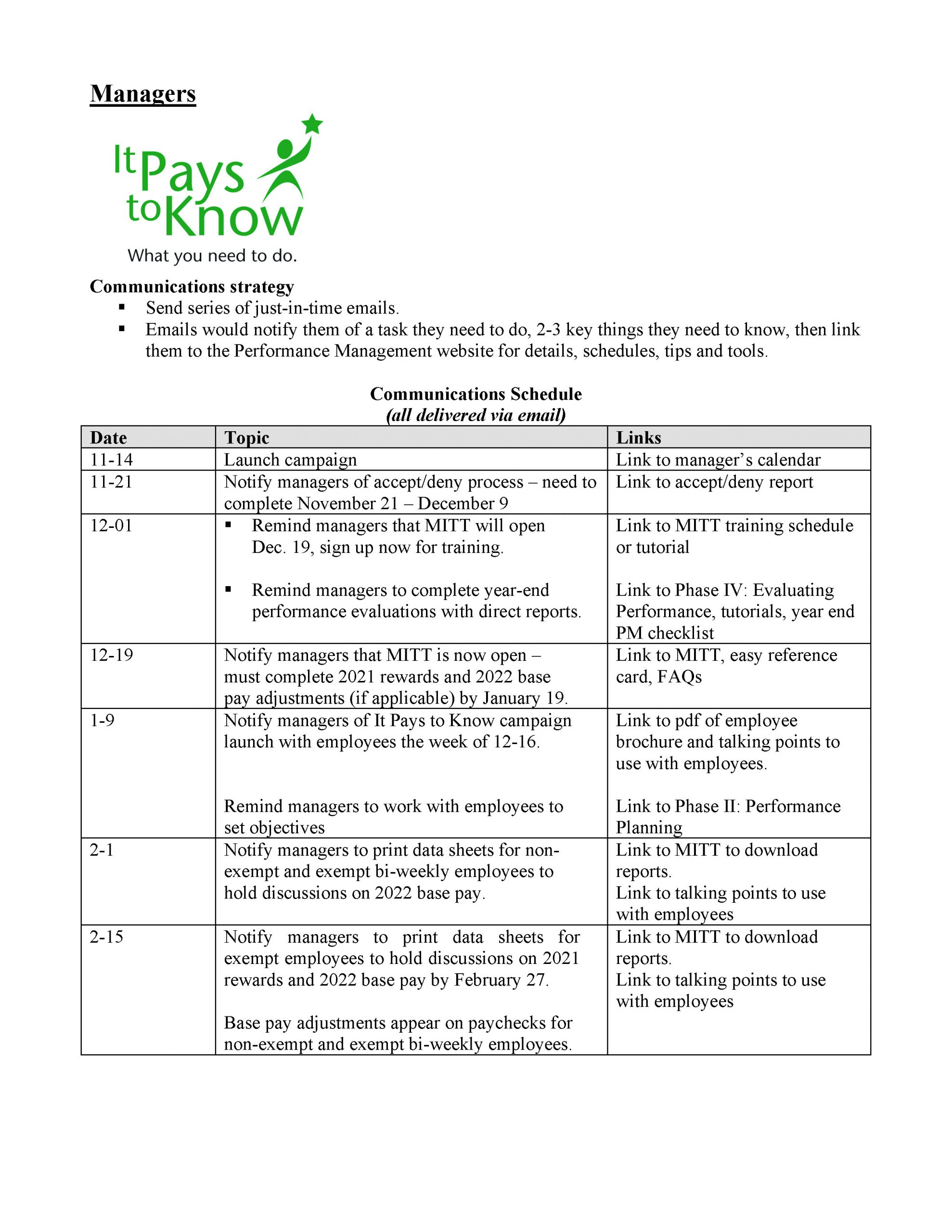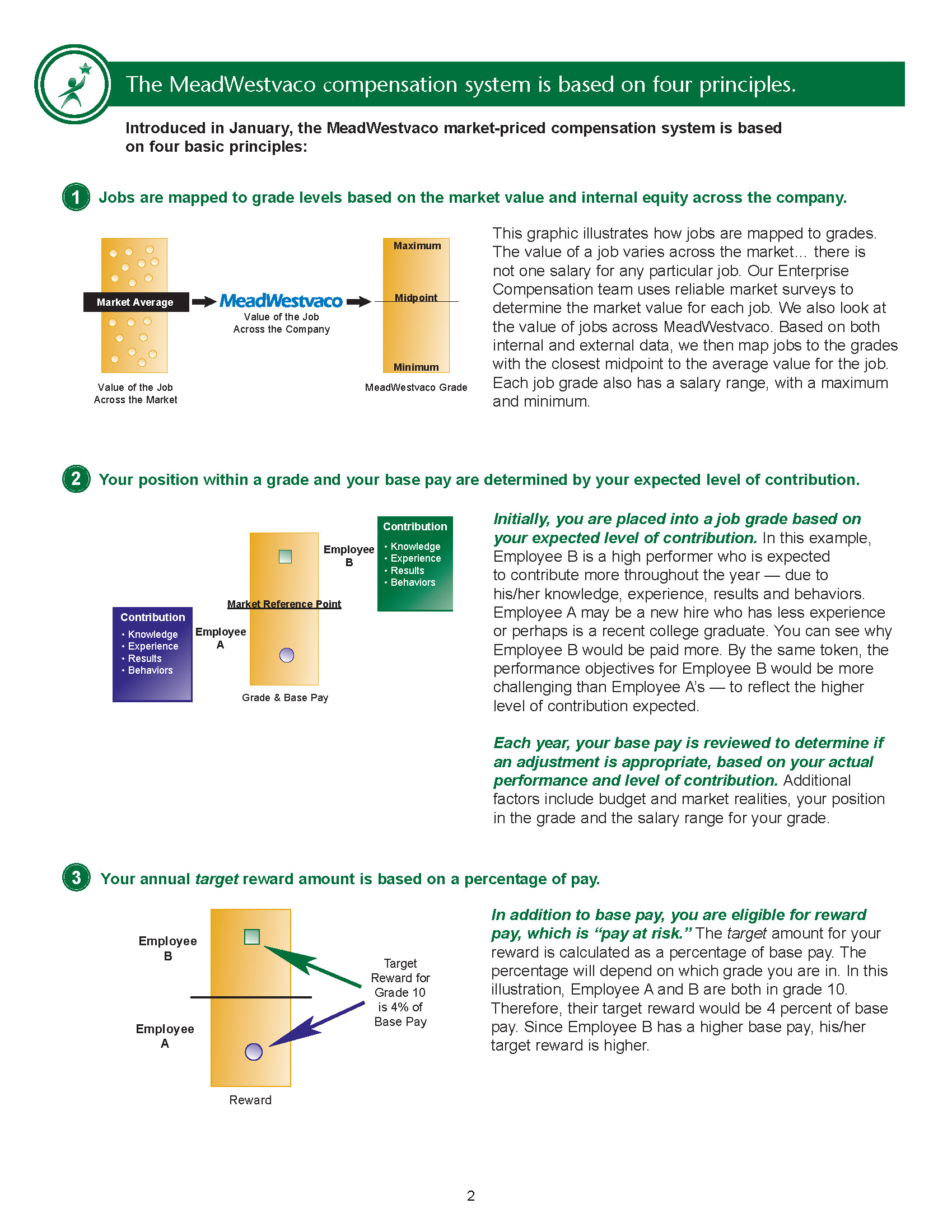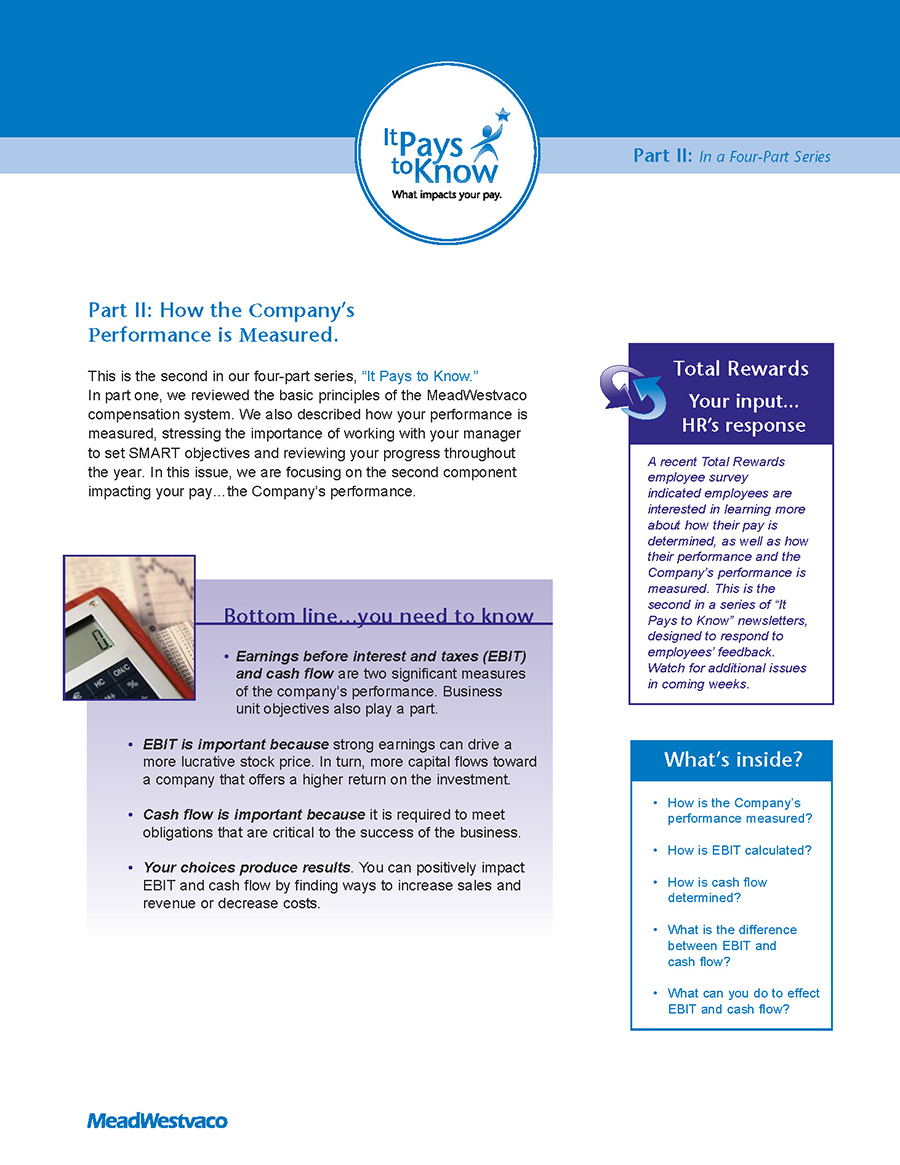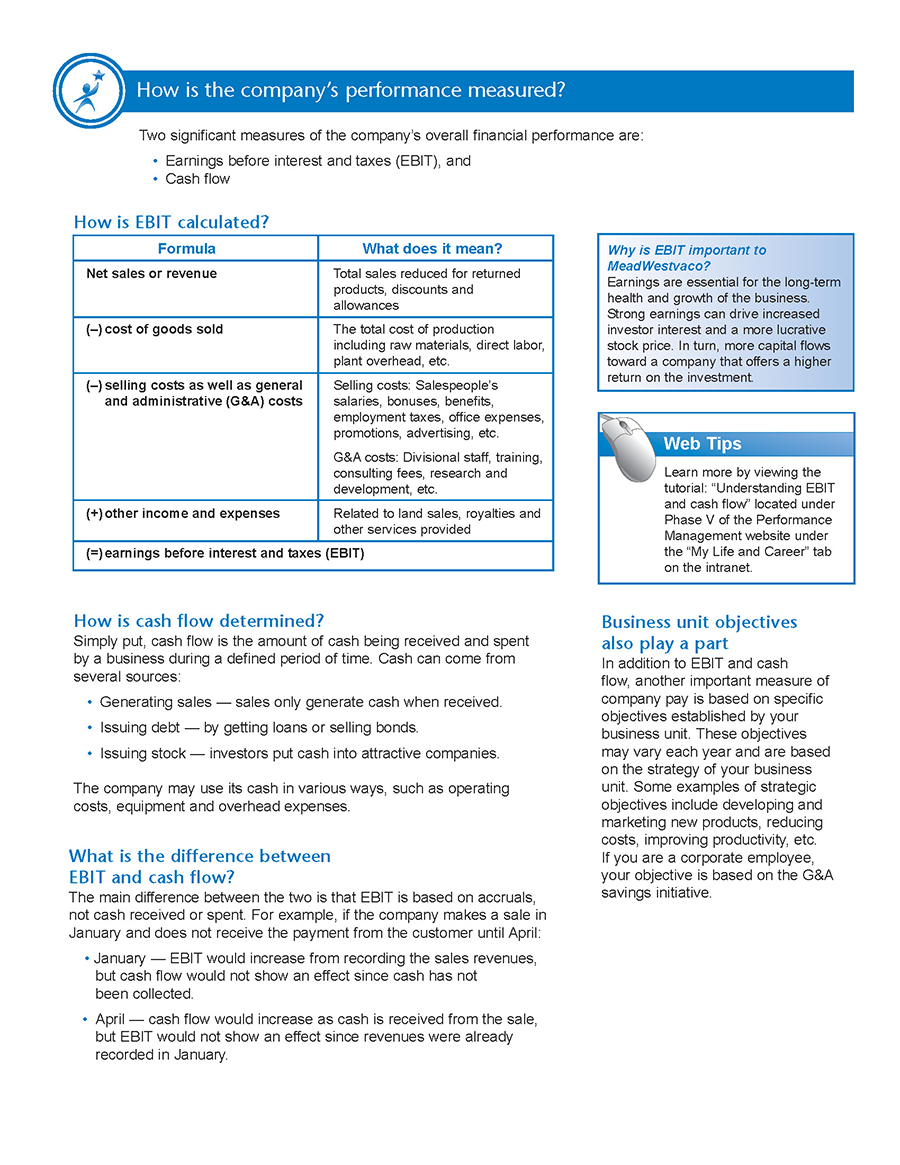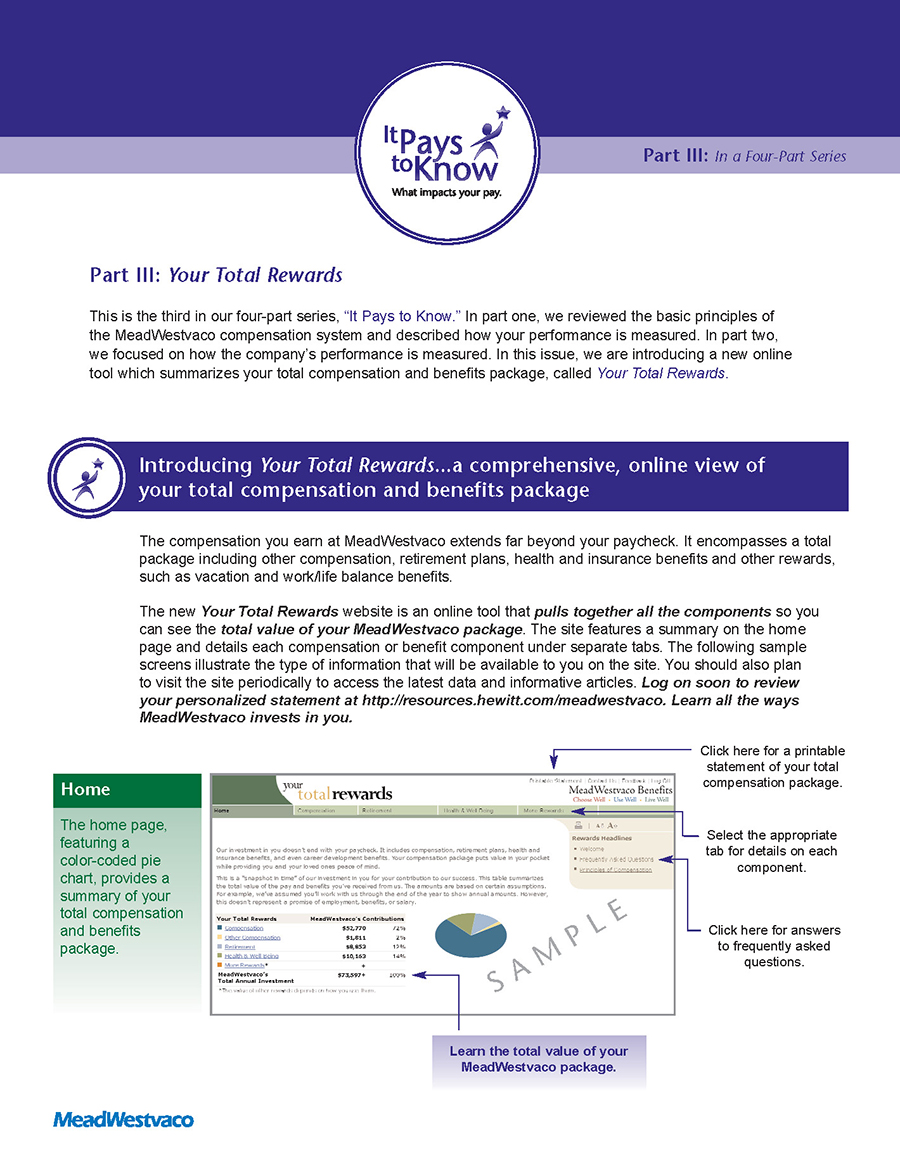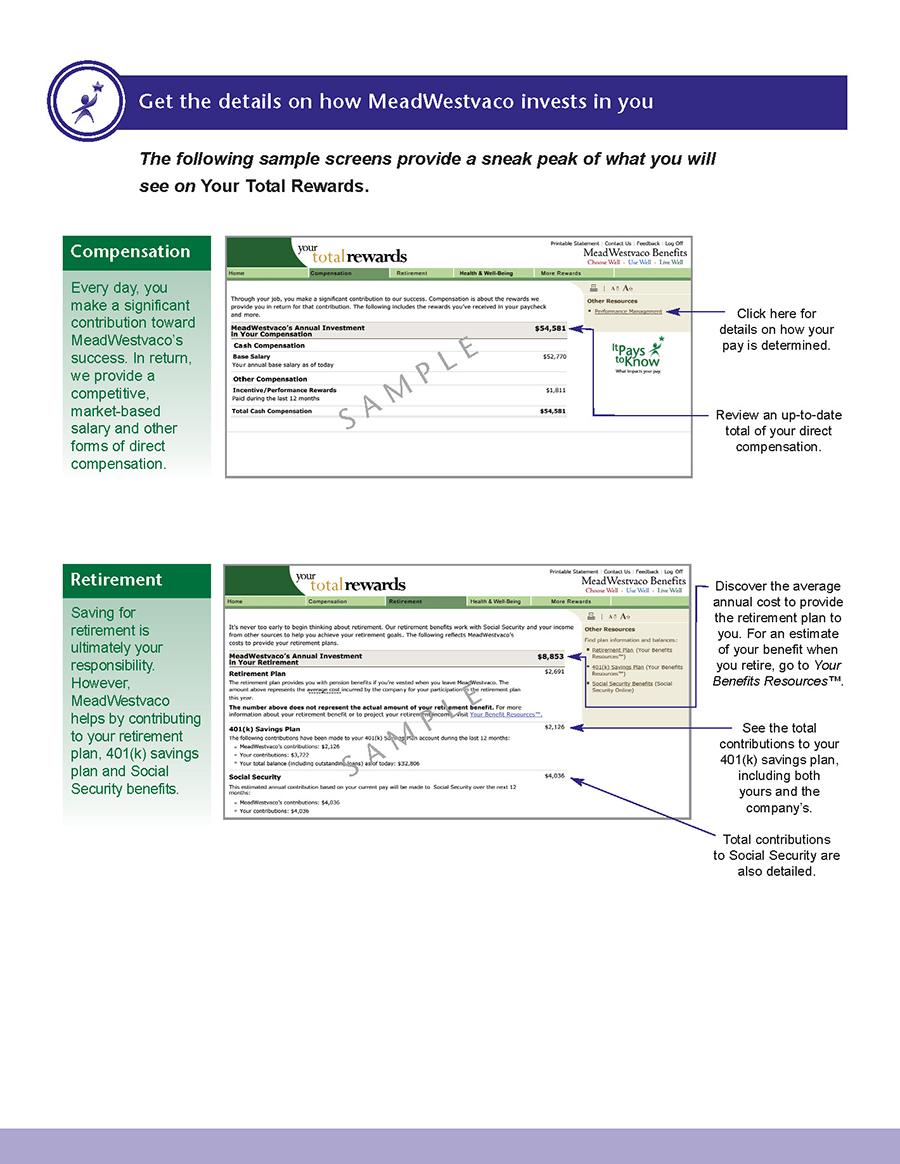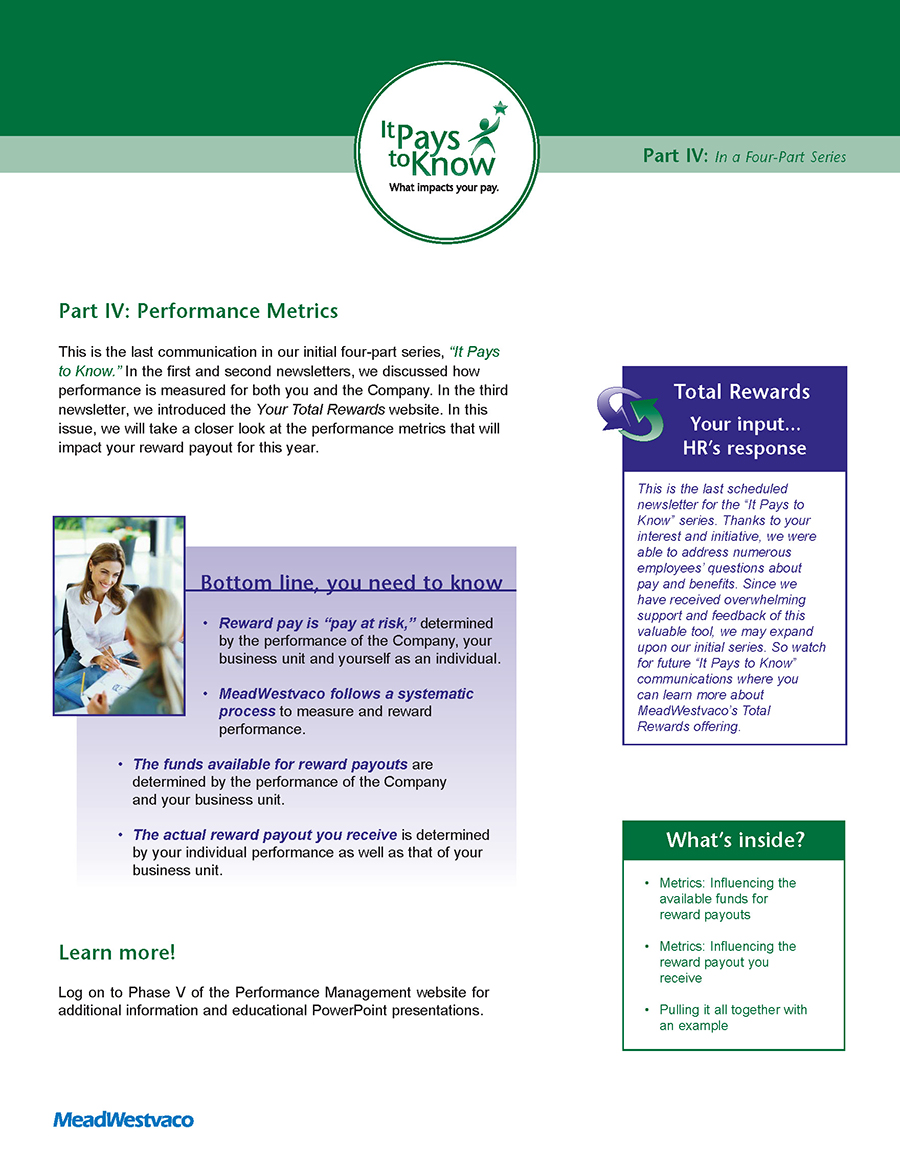Client
MeadWestvaco
Industry
Packaging/Manufacturing
Number of Employees
23,000
Challenge
The company’s U.S.-based workforce was facing major changes in compensation structure, with some employees negatively impacted. Leaders would need to carefully communicate the new tiered system, its four principles, and the performance management expectations behind it.
Solution
To be sure employees would understand the changes, managers needed to first understand the principles behind performance-based pay and rewards. Then they could be trained in how to explain it to their direct reports. Adding to the complexity, the company’s leadership council would be playing a key role in approving communications. This would require an integrated, phased approach.
Phase 1: Announce Changes
- Develop a 15-month communications plan to address all phases in the new process, from initial training to rollout and full use.
- Design materials for HR to educate managers on grade level/base pay adjustments, and to train them for employee discussions.
- Email all employees, announcing the upcoming changes and what to expect next.
- Post-survey employees to gauge overall understanding of changes, and ensure they’ve met with managers.
Phase 2: Roll Out New Performance System
- Prep managers for mid-year employee reviews using new performance measures — provide talking points and personalized statements.
- Create personalized employee statements showing changes and new salary band.
- Conduct leadership council and HR focus groups to discuss feedback.
Phase 3: Train for Performance-Based Discussions
- Design and roll out training curriculum for executives and managers, with a deep dive into all four compensation principles.
- Stress the link between pay/rewards and performance (of the employee, the business unit, and the company overall)
Phase 4: Reinforce “Pay for Performance” with Employees
- Create and roll out “It Pays to Know” campaign to employees — email campaign with links to a full brochure, plus newsletter version mailed to those directly impacted by grade/pay change.
- Stress the link between pay/rewards and performance (of the employee, the business unit, and the company overall).
- Review new system results with leadership council one year after initial implementation, and assess need for additional communications.
